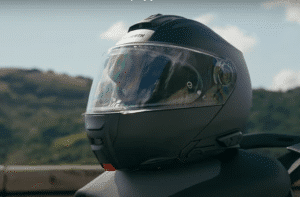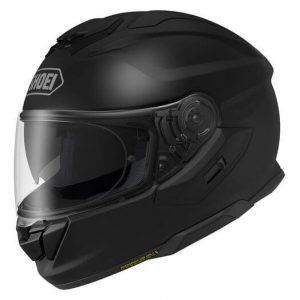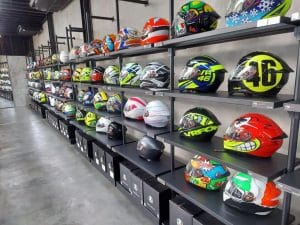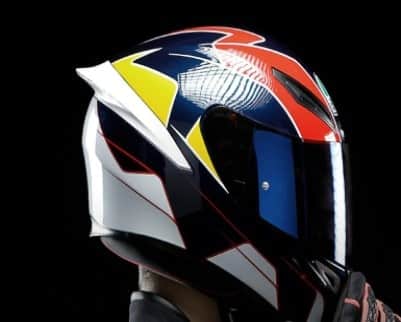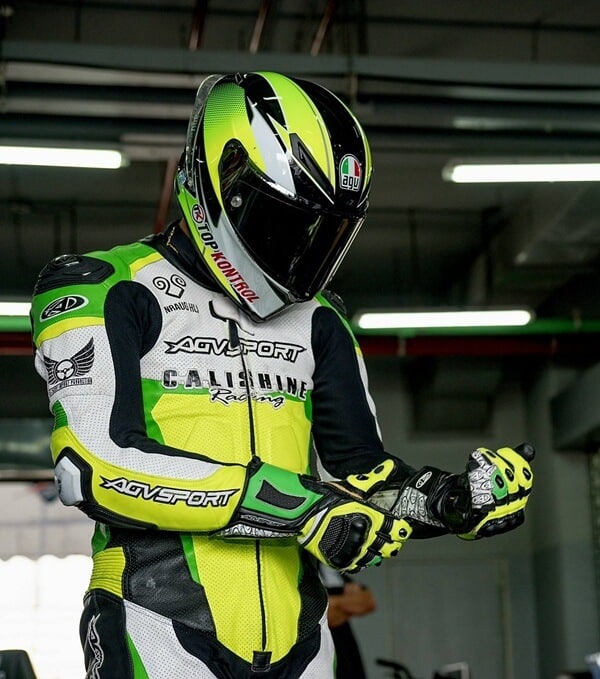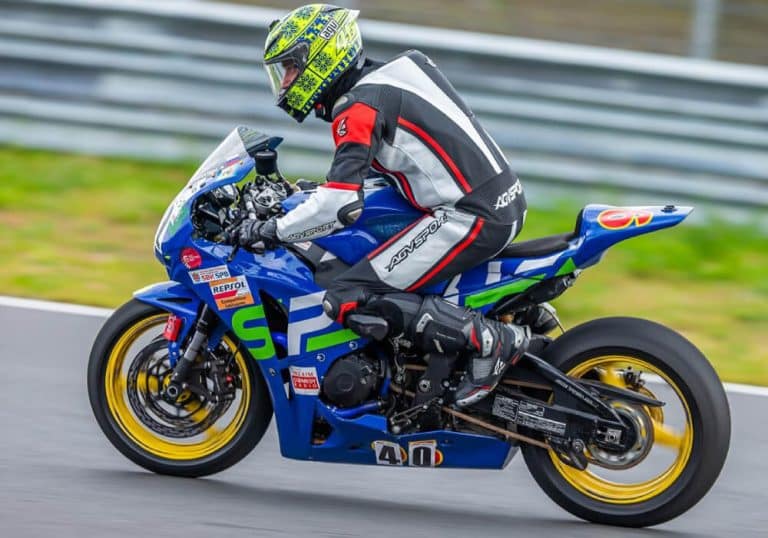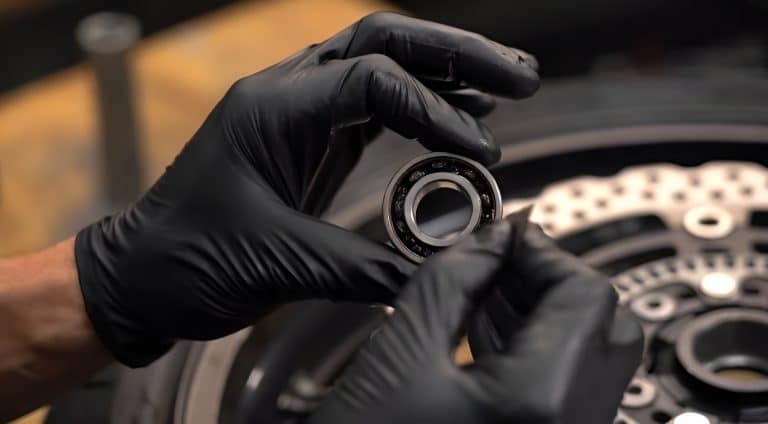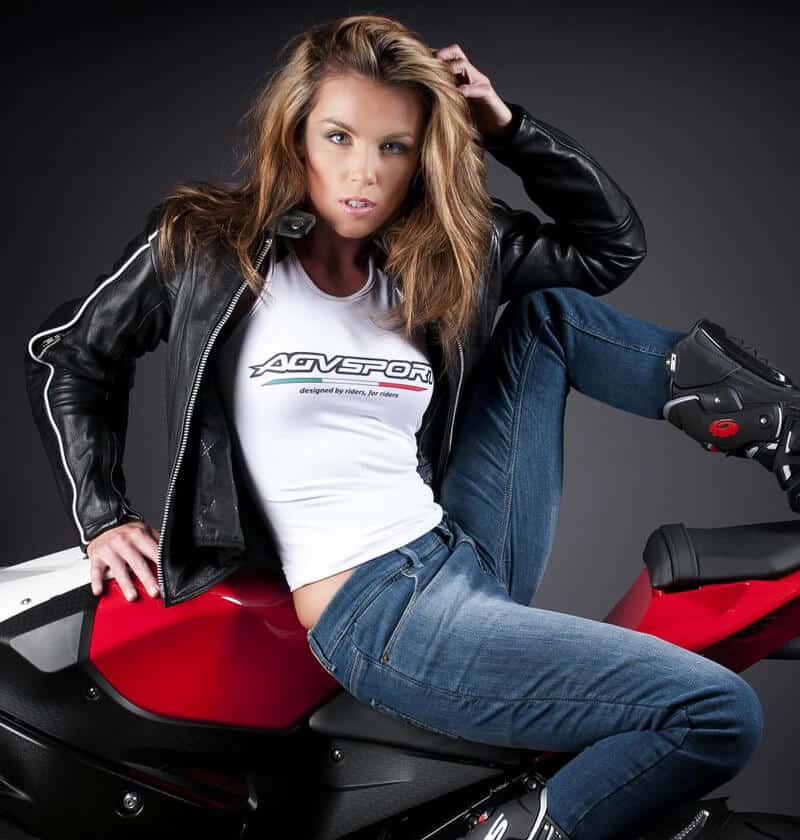At some point, every motorcycle rider faces the need to refresh or transform their bike’s appearance. It’s not just about looking good; it’s about protecting your ride from relentless rust and the wear and tear that comes with miles on the road. Over time, that once-shiny finish can start to chip, exposing your bike to the elements, and that’s when you know it’s time for a paint job. But the big question remains: what kind of paint do you use on a motorcycle?
As a fellow rider, I’ve been there, staring at the array of paint options and wondering which one will do the job best. For most of us, enamel or acrylic enamel is a solid choice. It’s durable enough to give your bike a glossy, high-quality finish without cracking or spider-webbing, provided it’s applied right.
Now, about lacquer paint—unless you’re chasing that old-school, vintage vibe and are prepared to keep your bike away from the sun, it’s probably best to steer clear. Lacquer can give you that retro look, but it’s not as resilient as modern options, and your bike deserves to shine both on the road and at the curb.
| Best Can Spray Paint | Best Brush & Sprayer Paint | Best Metallic Airbrush Paint |
|---|---|---|
 Dupli-Color Universal Gloss Paint Amazon |  Speedokote High Gloss Jet Black 2K Acrylic Amazon |  Vallejo Metallic Set Model Air Paint Amazon |
| High-quality, fast-drying acrylic lacquer aerosol paint offers smooth, even coats. Although flexible, it may chip over the years. | Forgiving, fast-drying, and easy-to-apply high-gloss paint comes with three-quarters of a gallon of paint and a quart of medium activator. But it might be too thin for some. | Best for custom jobs, trims, and touch-ups, this airbrush paint is beginner-friendly. It comes with eye-droppers for easy mixing and application. |
Factors to Consider When Painting a Motorcycle
When it comes to painting a motorcycle, there are several crucial factors to consider to ensure a professional and lasting finish. Before diving into the actual painting process, taking these steps into account will help you achieve the best possible results:
Remove Rust
Before applying any new paint, it’s essential to remove any rust from the motorcycle’s surface. Rust can prevent the paint from adhering properly, leading to an uneven finish and potential long-term damage. Use sandpaper, wire brushes, or a rust remover to clean the surface thoroughly.
Apply Anti-Rust Treatments
To prevent future rusting, applying a steel treatment or anti-rust solution is highly recommended. This treatment will protect the bare metal underneath the paint, ensuring that your motorcycle remains rust-free and the paint stays intact for longer.
Choose a Paint Color
Selecting the right paint color is not just about aesthetics; it’s a personal decision that reflects your style. Consider your preferences, the bike’s overall look, and perhaps consult with someone else to finalize your choice. Keep in mind that darker colors often show imperfections more, while lighter colors can make a bike appear larger.
Thoroughly Clean and Degrease

Cleaning and degreasing the motorcycle’s surface is crucial for achieving a smooth and durable finish. Use a soap solution or white spirit to wipe down the entire surface. The step removes any dirt, oil, or grease that could interfere with the paint adhering properly.
Pick Paint Quality by Brand
Not all motorcycle paints are created equal. It’s important to use a reputable brand known for high-quality motorcycle paints. Avoid generic or low-quality paints, as they may not provide adequate protection or the desired gloss. Investing in a good quality paint ensures better coverage, durability, and a more professional appearance.
By considering these factors before starting your motorcycle painting project, you’ll set the foundation for a high-quality, long-lasting paint job that not only looks great but also protects your bike from the elements.
Understanding Paint Systems
Before choosing paint for your DIY motorcycle project, you need to understand paint technology basics. A paint system can be either single-stage or two-stage.
- Single-Stage Paint: Delivers color and gloss in one coat.
- Two-Stage Paint: Requires a layer of paint followed by a protective clear coat.
For coatings, you can choose between 1K and 2K coatings.
- 1K Coatings don’t require a hardener to cure and are common in aerosol paints.
- 2K Coatings are mixed with a hardener before spraying, offering higher resistance to chemicals and weather.
Choosing the Best Paint for Your Motorcycle
Here’s a quick guide on the types of paints you can use, depending on your experience and budget:
Brush and Sprayer Paints
For those who are confident with a brush or sprayer, you can achieve a finish that rivals the original paint job. This approach is fantastic for restoring old bikes or adding custom designs. Fine bristle brushes are perfect for detailed work, while sprayers make quick work of covering larger areas.
Sprayers are versatile; they handle oil-based paints well, but acrylic and latex also do the trick. Just remember to keep your brush steady and your sprayer well-thinned for an even coat.
Can Spray Paints
Not everyone is a seasoned painter, and that’s where can spray paints come in. They’re ideal if you’re looking for a straightforward solution. The curved surfaces of motorcycles make it easier to get an even coat with a spray can. Just keep a steady hand, maintain the right distance from the surface, and use smooth, sweeping motions.
You’ll find that spray paint blends seamlessly, and there’s no need to worry about sanding between coats.
Airbrush Paints
For those aiming for a high-quality, professional finish, airbrush paints are the way to go. They offer an industrial-grade coating with thin, even layers and eliminate the need for paint thinners to achieve the right consistency. Airbrushes are great for covering all surfaces of your motorcycle—just make sure you use the correct paint and prep your bike properly. The result? A sleek, custom finish that’s elegant.
How to Paint Your Motorcycle: A Step-by-Step Guide

If you’re a motorcycle enthusiast, you’ve probably dreamed of giving your bike a fresh look. Whether you want to touch up the current color or go for a complete makeover, painting your motorcycle is a rewarding project. Here’s a detailed, step-by-step guide to help you achieve a professional finish.
What You’ll Need
Before diving into the painting process, gather all necessary materials to ensure a smooth experience:
- Sandpaper or sanding tools
- Paint spray gun
- Microfiber cloths or rags
- Body filler
- Epoxy primer
- Hardener for the epoxy primer
- Motorcycle paint (make sure it’s specifically for motorcycles)
- Paint thinner
- Gloves and a mask/breathing device (to handle toxic fumes)
- Plastic sheets/covers to protect surrounding areas
Having everything ready before you start will save you time and hassle during the painting process.
Setting Up Your Painting Area
- Choose Your Spot: Find a well-ventilated area where you don’t mind making a mess. Garages or storage areas are ideal. Avoid painting outdoors or in areas exposed to elements like rain or dust.
- Protect Your Space: Cover floors and walls with plastic sheets or disposable paper. Secure them with nails or thumbtacks to prevent paint from splattering and causing a mess.
- Ventilation and Lighting: Set up a variable speed fan to blow paint fumes out of the area. Proper ventilation is crucial for your safety. Add extra lighting—construction lamps or table lamps work well—to ensure you can see what you’re doing clearly.
Preparing Your Motorcycle for Painting
- Disassemble the Bike: Remove the parts you plan to paint, such as the tank plate. Use appropriate tools like Allen wrenches to take off any bolts and keep them in a safe place.
- Sand the Surfaces: Sand the parts you want to paint to remove old paint and smooth out the surfaces. Use circular motions and aim to reach the bare metal. Once done, wipe away any dust with a clean cloth.
- Apply Body Filler: For a smooth finish, apply body filler to any imperfections. Mix it to a creamy consistency and apply a thin layer. Let it dry, then sand it smooth. Repeat as necessary until you’re satisfied with the surface.
Painting Your Motorcycle
- Apply Epoxy Primer: Mix the epoxy primer with the hardener as per the instructions. Apply two even coats to protect the metal from moisture and corrosion. Let each coat dry for about an hour before applying the next.
- Sand the Primer: After the primer has dried, sand the surface with 2000-grit wet and dry sandpaper to remove any powdery texture and prepare it for paint.
- Wipe Down the Surface: Use a microfiber cloth lightly dampened with paint thinner to clean off any excess primer and dust.
- Mix and Apply Paint: Clean your spray gun thoroughly before mixing your motorcycle paint with thinner according to the recommended ratio. Apply three to four layers of paint, allowing each layer to dry before applying the next. After the third layer, sand lightly with 2000-grit sandpaper before the final coat.
- Apply Clear Coat Lacquer: To protect your paint job, apply two coats of clear coat lacquer. This will shield your bike’s new look from debris and water. Sand between coats if needed to ensure a smooth finish.
After Painting
- Clean Up: Thoroughly clean your spray gun to prevent clogging and ensure it’s ready for future use. Dispose of any plastic or paper sheets used to protect your workspace.
- Reassemble Your Bike: Once the paint is fully cured, reattach all the parts you removed.
Painting your motorcycle can be a fun and satisfying project. With the right preparation and attention to detail, you’ll give your bike a fresh, professional look that turns heads on the road.
How to Paint a Motorcycle Gas Tank

Painting a motorcycle gas tank is a satisfying project that can give your bike a fresh look. Here’s a step-by-step guide to help you achieve a smooth, professional finish:
What You’ll Need
- Dupli-Color aerosol spray paint (or another high-quality motorcycle-specific paint)
- Sandpaper (various grits: 120, 400, 600)
- Body filler (if needed)
- Epoxy primer
- Paint thinner
- Microfiber cloths
- Clear coat lacquer
- Masking tape and paper
- Gloves and a mask/breathing device (to protect from fumes)
Preparation
- Remove the Tank: Carefully detach the gas tank from your motorcycle. Make sure to drain any fuel and disconnect any lines or wiring.
- Clean the Tank: Wash the tank thoroughly to remove any dirt, grease, or residue. Let it dry completely.
- Sand the Surface: Start with a coarser grit sandpaper (120 grit) to remove any existing paint and smooth out the surface. Gradually move to finer grits (400 and then 600) to achieve a smooth finish. Ensure you sand evenly to promote better paint adhesion.
- Repair Any Dents: If your tank has dents or imperfections, apply body filler. Follow the instructions for mixing and applying, then sand the filler smooth once it’s dry.
- Apply Epoxy Primer: This step is crucial for ensuring good paint adhesion and protection against rust. Apply two even coats of epoxy primer, allowing each coat to dry as per the manufacturer’s instructions. Sand lightly between coats if needed.
- Wipe Down with Paint Thinner: After priming, wipe down the tank with a microfiber cloth lightly dampened with paint thinner. It removes any dust or residues.
Painting
- Mask Off Areas: Use masking tape and paper to cover any areas of the tank you don’t want to paint. Ensure edges are well-sealed to avoid overspray.
- Apply Base Color: Shake the spray can well and apply the base coat evenly. Hold the can about 6-8 inches from the surface and use smooth, sweeping motions. Apply multiple thin coats rather than one thick coat, allowing each layer to dry as recommended.
- Sand Between Coats: For a smoother finish, lightly sand the base color between coats with fine-grit sandpaper (e.g., 600 grit). Clean the surface with a tack cloth before applying the next coat.
- Apply Clear Coat: Once your base color is dry and you’re satisfied with the coverage, apply two coats of clear coat lacquer. This adds a protective layer and gives a glossy finish. Let each coat dry thoroughly.
Finishing
- Final Sanding and Polishing: After the clear coat is fully dry, you can do a final wet sanding with 2000-grit sandpaper for an ultra-smooth finish. Follow up with a polishing compound to enhance the shine.
- Reassemble the Tank: Once everything is completely dry and cured, carefully reattach the tank to your motorcycle. Reconnect any lines and wiring, and refill with fuel.
Tips
- Work in a well-ventilated area to avoid inhaling fumes.
- Keep your workspace clean to prevent dust and debris from settling on your freshly painted tank.
- Allow adequate drying time between each step to ensure the best results.
With careful preparation and attention to detail, you’ll end up with a beautifully painted gas tank that adds a personal touch to your motorcycle!
How to Paint Motorcycle Fairings

Painting motorcycle fairings can give your bike a fresh, custom look. Whether you’re looking to update the color or add a unique design, this guide will walk you through the process step by step. Follow these instructions for a professional finish!
What You’ll Need
- Sandpaper (400-grit and 1000-grit)
- Plastic primer
- Base color spray paint
- Clear lacquer
- Microfiber cloths
- Masking tape and paper
- Gloves and a mask/breathing device
- Body filler (if needed)
Part 1: Cleaning and Sanding the Fairings
Step 1: Remove the Fairings
Detach the fairings from your motorcycle by unscrewing all the bolts. Place them in a well-ventilated area to avoid concentrated fumes. If you’re working with new fairings, you can skip this step.
Step 2: Clean the Fairings
Wash the fairings with soapy water to remove dirt and grime. Use a sponge and a circular scrubbing motion, then rinse thoroughly. Pay extra attention to areas with built-up grime. If there are any decals or stickers, heat them with a hairdryer to make them easier to peel off.
Step 3: Sand the Surface
Sand the fairings using 400-grit sandpaper to smooth out the surface and help the paint adhere better. Sand in circular motions with moderate pressure, then rinse off the dust and let the fairings dry completely. The step usually takes about an hour.
Step 4: Repair Imperfections
If there are any scratches or dents, apply body filler, smooth it out, and let it dry before sanding it smooth.
Part 2: Priming and Painting the Fairings
Step 1: Apply Primer
Spray a coat of plastic primer onto the fairings. Ensure an even layer by moving in consistent strokes. Let the primer dry for 3-6 hours. Using a plastic primer helps with paint adhesion and longevity.
Step 2: Apply the Base Color
Spray a thin layer of base color paint onto the fairings, covering the entire surface. Allow it to dry for about 6 hours. For safety, wear a mask and goggles to protect yourself from fumes.
Step 3: Wet Sand the Base Coat
Once the base color has dried, wet sand the fairings using 1000-grit sandpaper to smooth out any imperfections. Wipe with a microfiber cloth to remove any residue and let dry.
Step 4: Apply Additional Coats
Apply 3-4 additional thin layers of base color, allowing each layer to dry for about 3 hours. This layering technique, known as “grip coats,” enhances the depth and richness of the paint.
Step 5: Add Clear Lacquer
Once the final coat of base color is dry, apply two coats of clear lacquer to protect and enhance the paint. Spray evenly and let each coat dry for about 2 hours.
Step 6: Final Drying and Reattachment
Allow the fairings to dry completely for 24 hours before reattaching them to the motorcycle. Use the original bolts to secure them back in place.
Tips
- Work in a well-ventilated area to avoid inhaling fumes.
- Keep your workspace clean to avoid dust settling on the paint.
- Be patient: Allow adequate drying time between each step for the best results.
By following these steps, you’ll achieve a stunning, professional-looking paint job that will make your motorcycle stand out. Enjoy the ride with your newly painted fairings!
FAQs – I Have the Answers
Q: What Kind of Paint Do You Use on a Motorcycle?
Enamel or acrylic enamel is an excellent choice for your bike because it’s soft enough not to crack but hard enough to provide a high-gloss finish if applied correctly. Lacquer paint is best avoided unless you’re aiming for a vintage look and are prepared to keep your bike out of the sun.
Q: What Is the Best Spray Paint for a Motorcycle Frame?
The best spray paint for a motorcycle frame is engine acrylic aerosol paint. It offers durability and a professional finish, making it ideal for motorcycle frames when applied correctly.
Q: What Type of Paint Is Best for Motorcycles?
For painting motorcycles, enamel and acrylic-enamel paints are the best choices due to their durable and crack-resistant finishes. Avoid using acrylic paints, as they can be easily removed. Lacquer paints are ideal for achieving a vintage look on motorcycle fairings.
Q: What Paint Do You Use to Paint a Motorcycle Engine?
For painting a motorcycle engine, you can use the following spray paints:
- VHT Engine Enamel Paint (Heat Resistance: 550°F)
- Rust-Oleum Engine Enamel Paint (Heat Resistance: 600°F)
- PJ1 Spray Paint (Heat Resistance: 500°F)
Q: Is Motorcycle Paint Different Than Car Paint?
No, motorcycle paint and car paint are chemically similar. The main difference is in marketing and formulation. Motorcycle touch-up paints are designed for specific motorcycle colors, while car touch-up paints are made for car shades. Despite these differences, the underlying chemistry of the paints is essentially the same.
Q: Can I Paint My Motorcycle With Spray Paint?
Yes, you can paint your motorcycle with spray paint. If you’re new to this, follow a step-by-step procedure for best results. Be sure to wear personal protective equipment (PPE) because spray cans contain volatile and hazardous chemicals.
Information for this article was partially sourced and researched from the following authoritative government agencies, educational institutions, and nonprofit organizations:
M/A



